How to distinguish a male finch from a female?
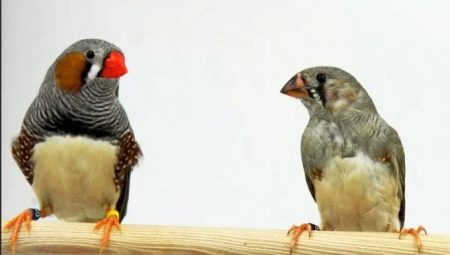
It often happens that there is a desire to purchase a songbird for your home, but the question arises of what gender to buy the one you like. Most often only males sing well. And the finches have the same story: the males are significantly superior to the females in their vocal abilities. Immediately, we note that finches are accustomed to communication, which is characteristic of flocking birds, so you should purchase a pair of birds: a female and a male. And in order not to be confused, having bought either 2 "singers" or "educators" of chicks, you need to take care and find out how to distinguish these birds by gender.
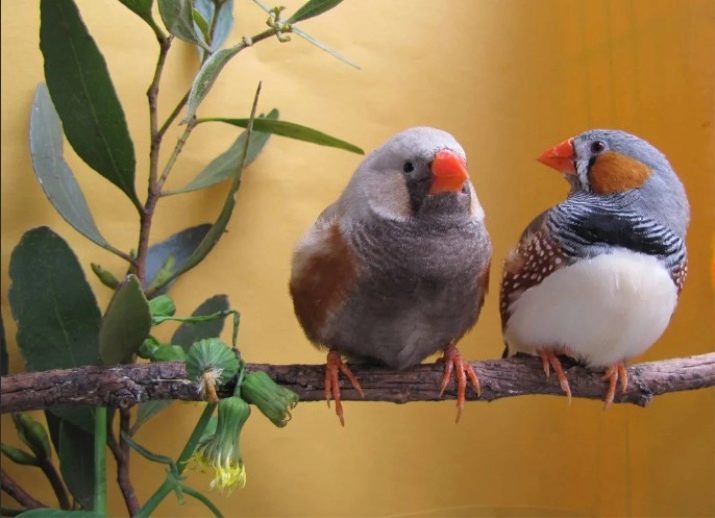
Features of gender determination
In many birds, including finches, anatomical sexual dimorphism is very poorly developed. This circumstance can explain the difficulty of determining their sex at first sight or even upon detailed examination. This is especially difficult for beginners in breeding birds, and even in cases where there is nothing to compare with (for example, the seller has one bird or all the same in appearance). But you should not rush, and even more so trust the seller's assurances about the sex of the birds, since there are some ways to determine the sex of finches that will help solve this problem on your own. You can define:
- in appearance (the size of heterosexual individuals within one variety, the color of the plumage and beak, the size of the beak);
- by voice data;
- by behavior.
Each of the above methods of distinguishing a boy from a girl among the finches requires more detailed consideration.
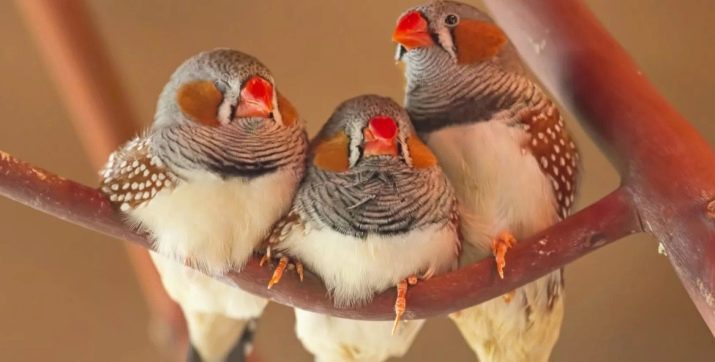
In appearance
In size, males are slightly larger than females, but this trait is a rather weak help when choosing a pet of a young age, as well as in cases where there are no other external sex differences. In many species, the following fact is observed: the boy's beak usually looks more massive than that of girls (it is thicker), and in some subspecies it has a slight hump at the base (from the side of the head). In addition, the beak of the males is distinguished by its brightness when compared with that of the female.
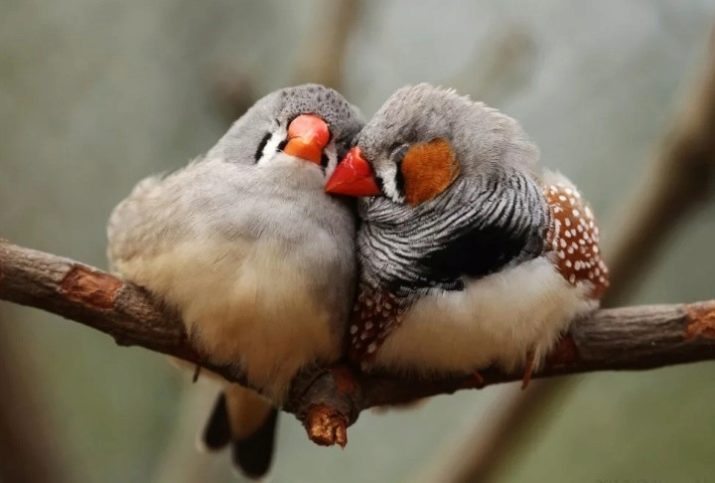
If it is possible to compare several birds within the same species, then the intensity of their color is a good sign. By color, one can determine not only the subspecies of the finch, but also the sex, and even the age of the bird. There are several varieties of finches according to the color of the general plumage or individual parts of the body, which have gained popularity in our country. Let us list a few of them as an example.
- Red-throated finches. Their main plumage is brown with dark stripes. Females have a faded color, and males have a rich brown spot in the chest area, which differs in color from the general plumage. The most important sign of a male is a red V-shaped collar on the neck when looking at a straight-seated bird. Females have no red color on their heads at all.
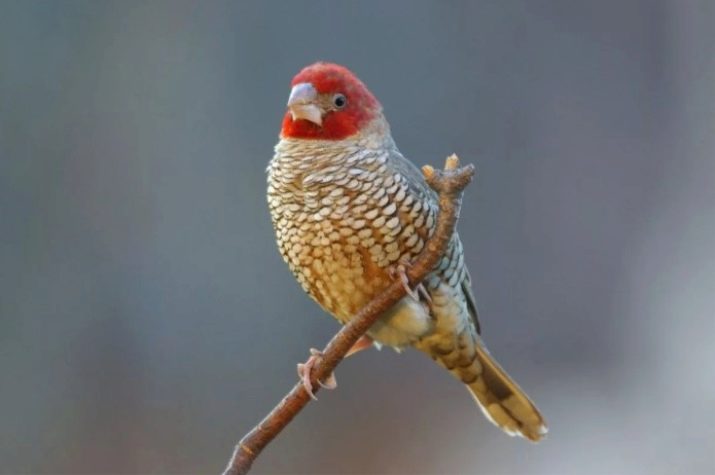
- Chestnut-breasted variety. It is very difficult to distinguish the sex of these birds by plumage; females and males are practically indistinguishable in color. The only "beacon" is a transverse black stripe on the chest separating the chestnut breast and the white belly of the bird. It is wider in the male than in the female. And the female's abdomen is not pure white, but rather grayish.
But these signs are noticeable only in the case of comparison, when two individuals of different sexes sit next to each other.

- Bronze-winged finches. The sex of these birds is also quite difficult to distinguish individually. There are black islets on their heads and tails; males have much more of them. In addition, the bronze stripes on the sides of the boys are more visible than those of the girls.

- Zebra. The main distinguishing mark of a male zebra finch is the presence of a "zebra" pattern at the junction of the chest and neck. It consists of alternating stripes of black and light colors. The female does not have this pattern. In addition, there are several artificially derived mutations of this type of finch. Among them, a white subspecies stands out, in which males can be distinguished from females only by the color of the beak: in males it is bright red, in females it is less saturated. There is also a subspecies of silvery finches, which have a pearly plumage color, sometimes so light that they are similar to white.
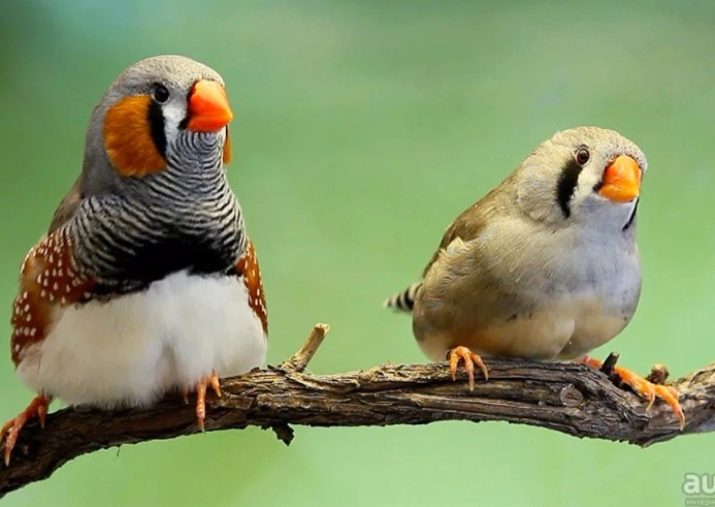
By voice
Experts consider singing to be the most accurate sign in determining the sex of a finch. The longest and most complex sounds can only be made by the male of this songbird species.... True, it should be noted that in some varieties of finches, neither males nor females have the ability to sing, but this circumstance can be considered an exception. Female finches can only produce short sounds, more often reminiscent of the sound of some electronic alarm clocks with abrupt "rush-to-rush". But the volume of bird sounds is much quieter.
The method of determining gender by voice has a significant drawback - birds begin to sing at the age of 4 to 6 months, not earlier.
By the way, it is at this age that you need to look for a pet from the finches. In addition, males can also "peep". And on command, they are unlikely to be filled with trills, so it is often not possible to check its vocal data when buying a pet.
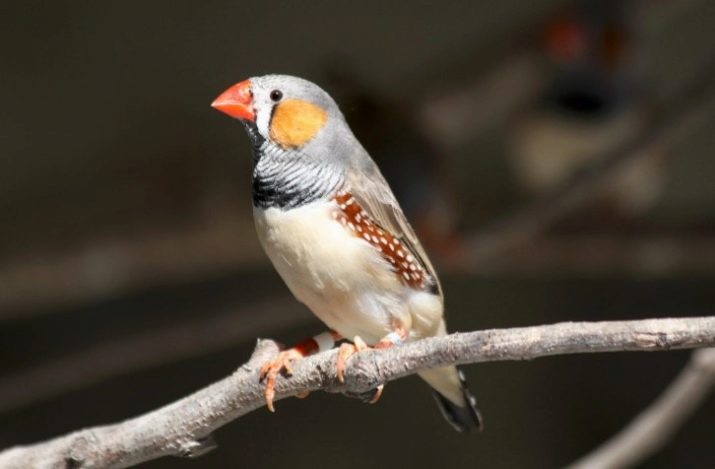
By behavior
Differences in the behavior of birds are more noticeable during the nesting period for the purpose of breeding offspring. Females are engaged in nesting more actively than the second half of the bird family. But the male at this time can prove himself as a singer. By behavior outside the mating season, it is difficult to distinguish the female from the male. These birds are quite active, nimble and curious regardless of gender.
If there are 2 males in the cage, then there is a chance to "expose" them, since they will certainly conflict on various trifles: when feeding, for the right to take the best place on the perch.And vice versa, 2 females will live together, they will not have collisions. But the latter, unfortunately, can mean that you have both a female and a male in your cage. They will show themselves later. For breeding, it is better to buy a heterosexual pair or several birds, among which there will be only 1 male.
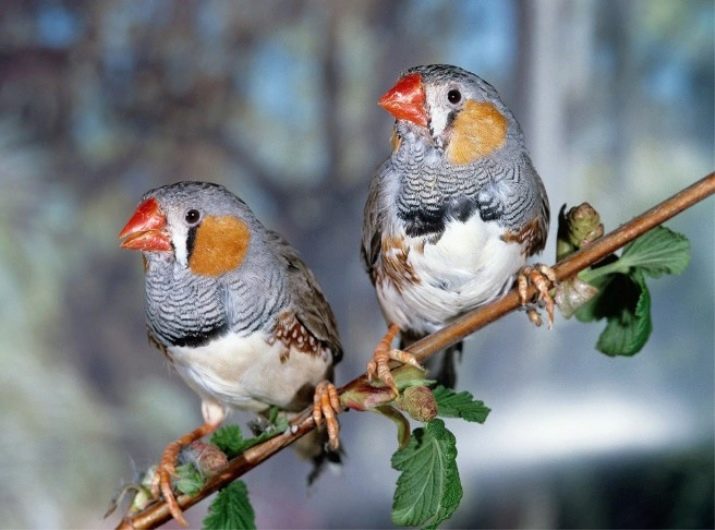
For more information on how to determine the gender of zebra finches, see the video below.







